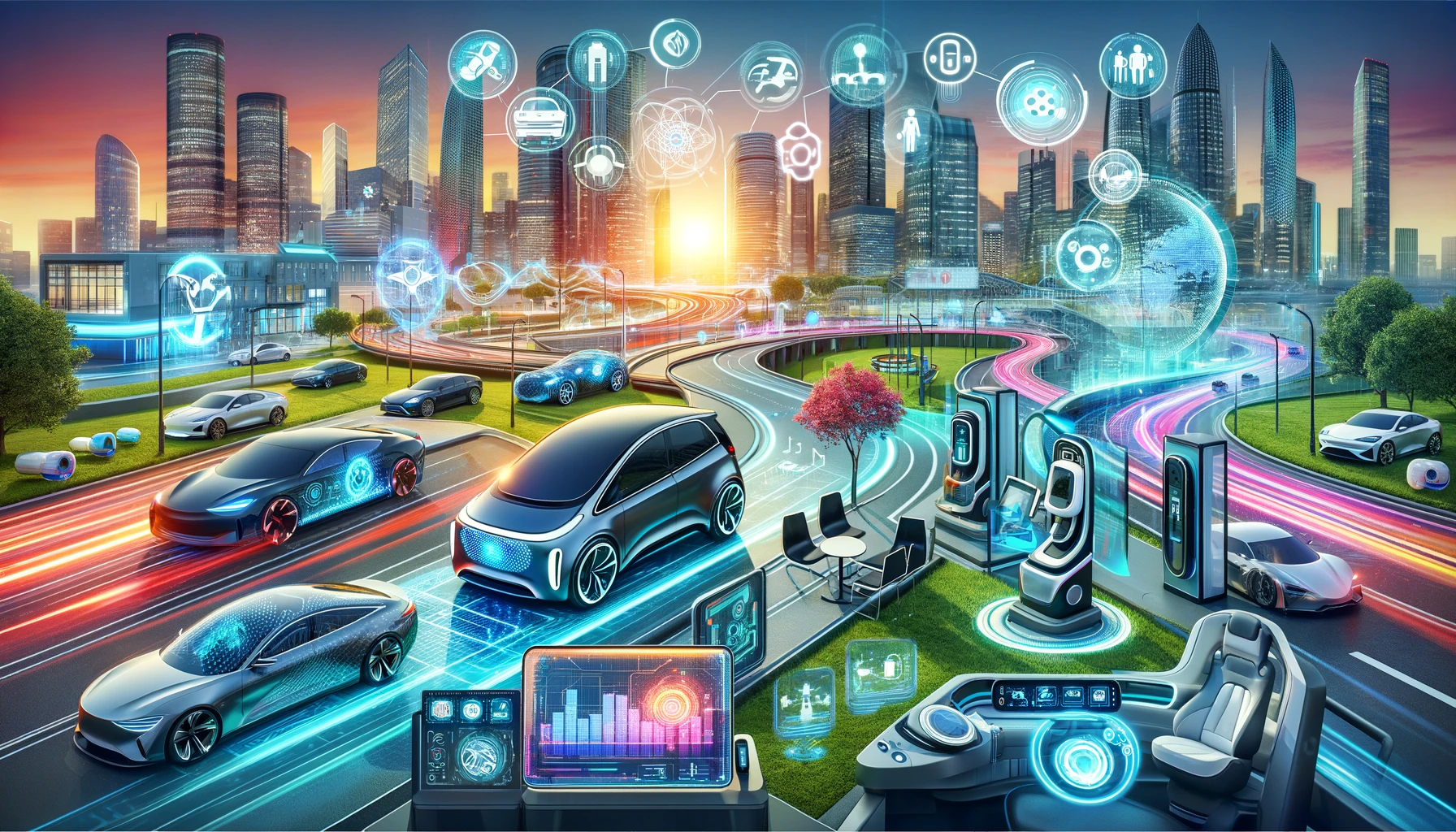Introduction
The automotive industry is undergoing a profound transformation driven by technological innovation, changing consumer expectations, and global initiatives to reduce carbon emissions. In 2024, these shifts are more evident than ever as automakers and suppliers adapt to a rapidly evolving landscape. From the rise of electric vehicles (EVs) to the integration of cutting-edge technologies like autonomous driving and connected car systems, the automotive sector is at the forefront of a new era in mobility. These trends are not only influencing the design and production of vehicles but also redefining how transportation is perceived and utilized across the world.
Electrification: The Power Shift
One of the most dominant trends in the automotive industry is the shift towards electrification. As governments around the globe introduce stricter regulations on emissions and offer incentives for green technologies, automakers are heavily investing in electric vehicle (EV) production. This trend is fueled by advancements in battery technology, which have increased the range and reduced the costs of EVs, making them more accessible to consumers.
Leading car manufacturers like Tesla, General Motors, and Volkswagen are expanding their EV portfolios, while new entrants like Rivian and Lucid Motors are also making significant strides. In addition, traditional automakers are transitioning their existing lines to hybrid and fully electric models. This electrification trend is expected to dominate the industry over the next decade as more nations announce plans to phase out internal combustion engines (ICE) entirely. With EV infrastructure such as charging stations rapidly expanding and becoming more accessible, consumers are increasingly favoring electric alternatives for their efficiency, low emissions, and cost savings over the long term.
Autonomous Driving: A Technological Revolution
Autonomous driving technology continues to evolve, promising to revolutionize the way people travel. The rise of autonomous vehicles (AVs) is a key trend that will redefine personal and commercial transportation. Major tech companies like Waymo, Apple, and Tesla are leading the charge in developing self-driving systems, which aim to make roads safer and reduce human error in driving.
While fully autonomous vehicles are not yet widespread, advanced driver-assistance systems (ADAS) are increasingly becoming standard in new vehicles. Features like lane-keeping assistance, adaptive cruise control, and automatic emergency braking are enhancing safety and convenience, providing a glimpse of the autonomous future. The potential benefits of AVs go beyond convenience; they could also significantly reduce traffic accidents, increase mobility for the elderly and disabled, and improve the efficiency of logistics and public transportation.
Sustainability: The Drive Towards Green Innovation
As the automotive industry moves towards electrification, the broader focus on sustainability is reshaping every aspect of the vehicle lifecycle, from manufacturing to end-of-life recycling. Automakers are implementing eco-friendly production processes and materials, prioritizing carbon neutrality and reducing the overall environmental impact of vehicles.
Sustainability initiatives include the use of recycled materials, alternative fuels, and energy-efficient manufacturing techniques. Additionally, innovations in battery recycling and the development of solid-state batteries with fewer environmental impacts are set to improve the sustainability of EVs. Companies are also exploring hydrogen fuel cells as an alternative to lithium-ion batteries, offering a potential solution for heavier commercial vehicles that require longer ranges. This growing emphasis on sustainability is not only driven by regulatory pressure but also by changing consumer preferences, as more buyers seek environmentally responsible options.
Connected Cars: A Smart Driving Experience
Another major trend in the automotive industry is the rise of connected vehicles. With advancements in communication technologies, vehicles are becoming smarter, offering a seamless integration of digital services that enhance the driving experience. These connected cars are equipped with internet access, enabling real-time data sharing for improved navigation, traffic management, and even remote diagnostics.
The integration of artificial intelligence (AI) and the Internet of Things (IoT) is allowing cars to communicate with each other, infrastructure, and even homes. This connectivity enhances safety by providing up-to-date information about road conditions, accidents, or hazards, while also enabling features like over-the-air software updates, entertainment options, and personalized driving settings. In the coming years, 5G technology is expected to further boost the capabilities of connected cars, enabling faster and more reliable communication for enhanced safety and convenience.
Consumer Preferences: The Shift to Shared Mobility
Consumer behavior in the automotive sector is also changing. The rise of shared mobility services like ride-hailing and car-sharing platforms reflects a growing trend towards vehicle usage over vehicle ownership, particularly among younger, urban populations. Companies like Uber, Lyft, and Zipcar are reshaping the way people access transportation, offering flexible, on-demand options that reduce the need for personal vehicles.
This shift is driven by several factors, including the high cost of car ownership, urban congestion, and increasing environmental consciousness. Shared mobility models are expected to grow, especially in cities where parking and traffic are significant challenges. As a result, automakers are exploring new business models, including partnerships with mobility service providers or launching their own services to stay competitive in this changing landscape.
Conclusion
The automotive industry is at a pivotal moment, shaped by trends that are driving the future of mobility towards a greener, more connected, and autonomous world. Electrification, autonomous driving, sustainability, and connected technologies are all converging to redefine transportation as we know it. Automakers must navigate these trends while balancing innovation with regulatory and market demands. As consumers continue to embrace new technologies and business models, the road ahead promises to be dynamic and full of opportunities for growth and transformation.
